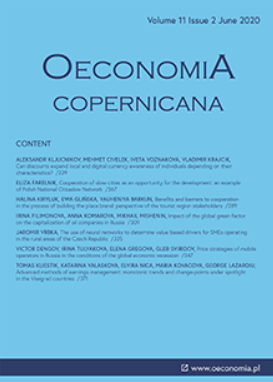A new method for calculating mirror data asymmetry in international trade
A new method for calculating mirror data asymmetry in international trade
Author(s): Iwona Markowicz, Paweł BaranSubject(s): Business Economy / Management, International relations/trade, Methodology and research technology, Transport / Logistics
Published by: Instytut Badań Gospodarczych
Keywords: international trade; intra-community trade; mirror data; COMEXT;
Summary/Abstract: Research background: Some statistics are of a bilateral nature. This is how foreign trade data is organized. They are recorded both in the supplier and recipient countries, hence they are called mirror data. The data recorded at both trading partner countries are not the same for different reasons. Such differences between data on the same groups of transactions are often referred to as the asymmetry of mirror data. The information about the value of the flows of goods are of great importance in economic analyses and therefore their quality is particularly important. Purpose of the article: The aim of this paper is to present a new measure of data asymmetry — the aggregated quantity index with value-based weights. Methods: The proposed measure combines the quantity and the value of turnover in individual trade relations. Such a measure makes it possible to eliminate basic deficiencies in value-based measures, while considering the specificity of trade in individual countries. The proposed measure of data asymmetry was confronted with several measures present in the literature and previously used by the Authors. The numerical example uses Comext data on intra-Community trade in 2017 provided by Eurostat. Findings & Value added: The proposed measure performs better than all the previously used data asymmetry indices. It is to some extent immune to exchange rate differences and inconsistencies resulting from the inclusion of transport and insurance costs in the value of goods. In addition, it gives lower weights to unimportant trade directions than other data asymmetry indices. Since the new index has proved to be better than the measures previously used, it is worth applying to those trade relations where the data are not derived from customs documents, but from declarations made by businesses, as in the case of intra-Community trade.
Journal: Oeconomia Copernicana
- Issue Year: 11/2020
- Issue No: 4
- Page Range: 637-656
- Page Count: 20
- Language: English

